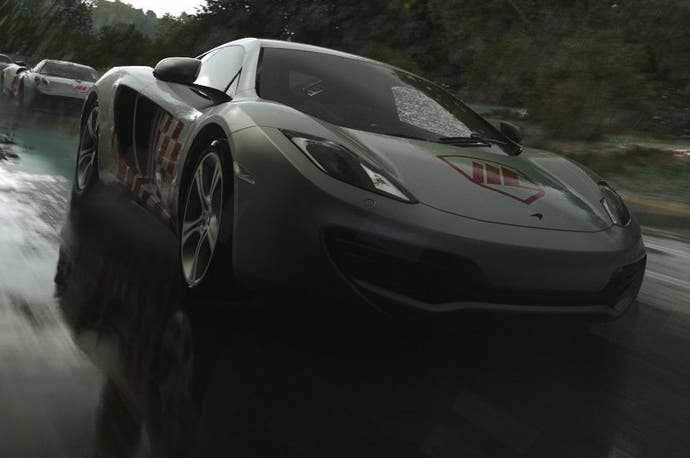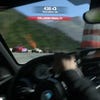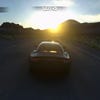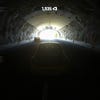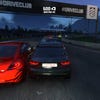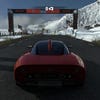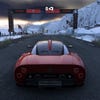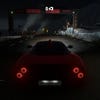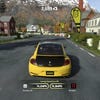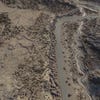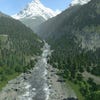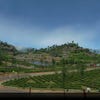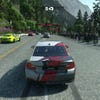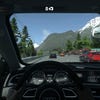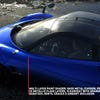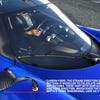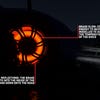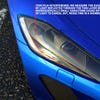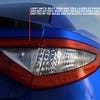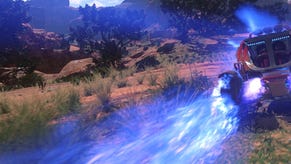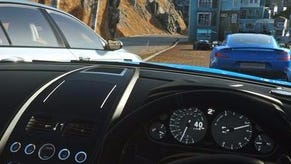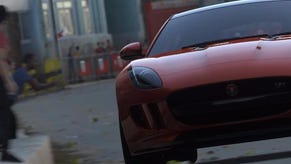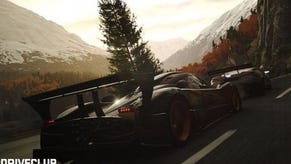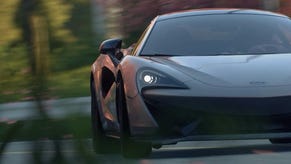Digital Foundry vs DriveClub
The long and winding road.
It's been a long road for DriveClub, initially slated for release alongside the launch of the PlayStation 4, delayed until early 2014, then pushed back again to Q4 - a decision-making process that yielded genuine dividends based on our experience with the game at E3 and Gamescom. During this extended development period, Evolution Studios' original goal of 60fps racing gave way to a more realistic 30fps target, using the extra rendering time per frame to create state-of-the-art effects work worthy of the generational leap represented by the PlayStation hardware. The result is a game that is beautiful to behold, and considerably more impressive than the shaky builds of 2013.
As expected, the experience is delivered in native 1080p with some impressive image quality gains courtesy of a complex anti-aliasing system that covers several bases. Evolution Studios uses a variety of anti-aliasing passes, including a post-process FXAA, temporal and pixel-based passes, along with further algorithms that work directly on materials themselves. Most edges appear clean and smooth giving the title a distinctly super-sampled appearance across many objects, although this level of quality doesn't quite extend across the entire scene.
As impressive as this sounds, unfortunately there are still some noticeable jaggies around the bodywork of the cars, on fences and some of the walls surrounding the track, where the post-process anti-aliasing algorithm appears to miss quite a few edges at certain angles. However, beyond these artefacts the results are generally excellent and a cut above most PS4 and Xbox One releases.
DriveClub avoids the open-world spectacle of Forza Horizon 2 in favour of a more traditional set-up where courses are selected via menus and online interaction is directed to specific areas. The emphasis here is firmly on re-creating the feeling of working within a collaborative racing team, mastering new courses and cars, sending and participating in challenges online, while unlocking content as you go. This more conventional approach hasn't limited Evolution Studios' flair for visual exposition, instead allowing for the developer to deliver a level of graphical complexity above that of most other new-generation console racing games - only Forza Horizon 2 provides ample competition.
The opening pre-race sequences demonstrate this perfectly with the camera panning across locations that are large in scale and intense in detail. Mountains and valleys are filled with trees, while buildings, walls, fences, and other man-man structures are seen scattered across the landscape far into the distance. The rocky hillsides and off-road terrain display cracks and bulges that can be seen from the sky and only get more intricate as the camera moves down to the ground level. The complexity here continues once racing begins, where it's possible to appreciate the high quality models and textures on offer, along with additional effects such as leaves, dust, and confetti that sporadically litter the track while driving.
While foliage and shadow pop-in are still visible, transitions between detail levels now appear much smoother than in previous builds and LOD streaming isn't too pronounced. The disappointing factors here come in the form of a low level of anisotropic filtering, which results in ground textures appearing blurry from a few metres away, and a massive reduction in environment detail visible in the rear view mirror when driving via the cockpit view - spectators, trees and geometry details are all ruthlessly culled, although these have no impact on the mirror's practical use.
The cars are also lavished with the same level of attention as the scenery: everything from the brake lights and tires to the internal cockpit is intricately rendered, with various surfaces - such as plastics, rubber and metallic paint - all accurately simulated. Small touches, such as dents and scratches on the bodywork slowly appear throughout the race, while dirt and other cosmetic blemishes creep in as you speed over muddy terrain and dusty rural roads. The damage model initially appears fairly unimpressive, mainly because it's not possible to completely total the cars, although the effect is actually complex from a technical standpoint. Damage is procedural, with the speed, force and angle of the impact shaping bodywork deformation. Panels are bent, dented and raised, while windscreens crack upon impact - but things stop short of car debris breaking off and spilling into the track.
Jostling for position around one of DriveClub's many courses, cars handle differently when driving across gritty roads or smooth tarmac. Changes in suspension, drift and grip are all affected by the conditions of the ground and this is clearly felt when cutting across a gravel bank before rejoining the main road once again. While the handling sits on the more arcade side of things it's great to see so much detail put into how the cars behave under various conditions, with physics, speed and collision impact all nicely simulated. This adds a layer of depth to the racing that becomes more apparent over time as you learn the ins and outs of different cars across a variety of tracks.
Controller response feels zippy and consistent throughout, carefully avoiding the heavy feel present on some 30fps racing games. Indeed, performance is rock solid with DriveClub delivering a locked 30fps with no frame drops or frame-time anomalies whatsoever - a huge upgrade from the variable frame-rates seen in the work-in-progress 2013 builds. Instead, differences in handling come down to the properties of individual cars, with some feeling weightier to drive than others. The use of camera and object blur also helps to keep panning movements smooth, which is usually an area where 30fps titles tend to feel lacklustre. The effect works in tandem with depth of field, adding an extra layer of intensity when racing, simulating the distress felt by the driver during hard hitting collisions, or the sensation of speed when flying past locations at over 150mph.
Here we find the sense of immersion is only dulled slightly by the limited amount of interactivity with the environment. Outside of briefly cutting across flat muddy or grassy banks, there are no opportunities to take things off-road or even explore small, sneaky shortcuts away from the designated path. Any detours see you teleported back on to the track after a few seconds (which also happens after spinning out of control and failing to re-establish driving in the right direction) and penalties are awarded for vehicle collisions and deviating off the beaten path. These choices feel somewhat at odds with the ferocity of the driving itself, which frequently sees single-player races descend into a session of bumper cars when amongst the pack.
Perhaps Evolution studios are attempting to prevent such behaviour online, where progression via skill rather than aggression is preferable. However, sometimes it seems like DriveClub wants to maintain a level of seriousness with the core racing experience without giving up some of the raw arcade intensity found in the MotorStorm series - but the end result is that the penalties serve to suck a good degree of fun out of the game.
With DriveClub, one of Evolution Studios' main goals was to keep the experience feeling interesting and fresh between races, and this ideology shapes the complex graphics engine powering the game. The in-house game engine features completely dynamic effects and a range of different rendering set-ups to help realise a variety of environment and racing conditions, from dynamic time of day and weather, to how different objects react to the surrounding lighting. Everything rendered in DriveClub is real-time with forward, deferred, and tile-based systems working in concert to create realistic-looking locations that have plenty of atmosphere.
Elements such as lighting, shadows, and the way materials behave under certain conditions continuously change to form a level of realism simply not possible on the last generation of consoles. Shadows slowly creep across the landscape and change shape as the sun's position moves across the sky, meanwhile in remote rural locations where there are no street lights, the only form of illumination on the environments comes from the car headlights, dramatically changing the look and feel of racing at night compared to in the evening or in broad daylight. Real-time reflections are also generously deployed across shiny surfaces of the cars and parts of the environments where lights and geometry are all reflected.
Having the entire rendering engine built around dynamic, real-time effects also allows for the player to customise their own driving experience: the day/night cycle can be sped up or slowed down, while the weather conditions can be changed - the default options allow for sunny, cloudy, overcast, and stormy conditions, but a post-launch patch will integrate snow and rain into the mix, along with the ability to experience all of these elements during a single event. Atmospherics also help to shape the look and feel of the key locations in DriveClub. Simulated particles in the upper atmosphere lead to chromatic aberrations appearing on the edges of lens flare, meanwhile clouds, mist, and smoke are all volumetric, and are affected by an underlying wind simulation causing these elements to move across the environment. Clouds in the air and plumes of smoke created by heated tyres sliding across tarmac are coloured by the surrounding light sources and appear to have a decent degree of depth.
At the heart of Evolution Studios' push for graphical authenticity is the use of physically correct materials across all surfaces in the game, which react differently according to various lighting conditions or effects. This means that rocks display a different type of sheen to tarmac, plants, or plastics in wet conditions, while the textured surfaces of carbon fibre and rubber appear to diffuse light more strongly than smooth surfaces.
Elsewhere, environments take on a distinctly different appearance as the sun moves across the sky and the surrounding lighting conditions change. The rocks in the Chilean desert locations take on an arid dryness in the late-afternoon sun, while the ice packs spread across the Norwegian landscape, losing their midday sheen as indirect light comes into contact with the surface. This gives way to some almost photorealistic scenes where trackside details pop with clarity and crispness, although under certain conditions rocks and other dry scenery can appear a little rubbery.
The impressive material properties also extend to the cars, both inside the cockpit and on the outer bodywork: scratches react differently to light than the shiny paintwork, while rubber, plastics, glass, metal and paint layers are all accurately simulated according to how light is reflected. Headlights also simulate how light from both the bulb and environment is scattered and refracted through the plastics, and this is joined by screen-space reflections used on the brake lights, wheels and on the road itself. Inside the cockpit, dirt build-up on the windscreen causes light to scatter across the surface, while in bright conditions the dashboard also reflects onto the glass. We also see the exterior of the car reflected on the internal carbon fibre panels too.
The wealth of advanced effects seems never-ending, but they all have an important part to play in creating a distinct sense of realism and authenticity to the world that would otherwise be very hard to match. Occasionally this level of accuracy leads to trackside imagery appearing a little flat and muted, closely resembling how similar conditions might look in real life, but it also infuses the game with plenty of stunning moments that really enhance the whole experience, from the snowy mountains of Norway to the lush valleys of India.
Of course, there are a few compromises made in some areas to accommodate the level of graphical quality on offer. Reflections across the cars and environments are rendered in low resolution, appearing pretty blocky up-close, while shadows render at different speeds according to their distance from the camera. Close-up shadows move across the scenery at 30fps, while from a few feet away we see things change every 170 frames or so. Presumably this allows the developers to free up more GPU time without having to sacrifice the level of effects rendered on screen, and although jarring when your eyes lock onto it, the effect is subtle enough to pass by unnoticed during gameplay.
DriveClub - the Digital Foundry verdict
There was a lot pressure on Evolution Studios to deliver a state-of-the-art flagship title that defined the PS4's next-generation credentials - a racing game that blurs the line between arcade and simulation while boasting the latest graphical features only possible on higher-end hardware. Despite some teething problems earlier in development, this is a feat that DriveClub manages to accomplish. Indeed, the game has benefitted from a remarkable makeover: from scrappy contender to visually polished technological showcase for PlayStation 4 hardware. The attention to detail and complex effects work is undeniably superb, while the handling model delivers an experience to suit both casual players and the more hardcore driving fans looking for something different from the likes of Gran Turismo or Forza Motorsport.
For all its rendering accomplishments, DriveClub is actually best viewed more as an evolution of an old-school arcade racing game, as opposed to a state-of-the-art simulation. In gameplay terms, the lack of open world exploration and use of fixed tracks may seem a little behind the times, but the use of carefully designed point-to-point routes and traditional tracks suit the social aspect of the game, which revolves around challenging other players while winning events to increase status for yourself and your club.
In that sense, DriveClub comes across as an updated take on the classic arcade racer, played out at a global level, with both competitive and collaborative gameplay at the very heart of the experience. The handling model makes the game easy to pick up and play, while the relentless AI on higher difficulty settings keeps single-player races interesting as you constantly battle to stay in first place.
Of course, while the game is finally on retail shelves this week, development of DriveClub is an on-going process, and we are promised a range of features in the coming months via post-launch updates. The first of these adds dynamic weather to the game, adding another layer of uncertainty to driving conditions while no doubt showcasing even more of Evolution's tech - something we'll take a look at in the near future. Photo and replay modes are also on their way.
It's fair to say that we had more fun with the game than Mike did in the Eurogamer review, but there are areas where we agree that the game falls a little short: the penalties and driving restrictions can sap the fun out of the most intense moments, and perhaps there is a lack of soul and charisma at the heart of the game. But for us, the combination of the arcade-style handling and the often beautiful visuals delivers an experience well worth checking out.
